#AudienceTargeting
Explore tagged Tumblr posts
Text
Understanding Google Shopping Ad Bidding: Tips for Budget Management | Opal Infotech
Introduction to Google Shopping Ads
Google Shopping Ads is one of the most powerful digital advertising tools for e-commerce businesses. Unlike traditional search ads that rely on keywords, Shopping Ads use a product feed to showcase visually appealing product listings directly in Google’s search results.
As a Google shopping ads agency, we specialize in helping businesses increase visibility, drive quality traffic, and achieve a higher return on investment (ROI).
However, to maximize results, it’s essential to understand Google Shopping Ad bidding and effective budget management. Let’s dive in.
Why Google Shopping Ads Are Essential for e-Commerce Success
If you're running an eCommerce business, Google Shopping Ads should be a key part of your digital marketing strategy. Here's why:
Higher Click-Through Rates (CTR): Shopping Ads have a significantly higher CTR than traditional text ads.
Better Buyer Intent: Users who click on Shopping Ads are more likely to make a purchase.
Stronger Visual Appeal: Unlike text-based search ads, Shopping Ads display product images, pricing, and store details upfront.
Automated Targeting: Google automatically matches your product feed to relevant search queries, eliminating the need for keyword selection.
By understanding how to optimize your bids and budget, you can maximize the performance of your Shopping Ads and achieve higher profitability.
How Google Shopping Ad Bidding Works
Unlike Google Search Ads, where you bid on specific keywords, Shopping Ads use an auction-based model where you set bids at the product or campaign level.
Key Factors That Determine Google Shopping Ad Placements:
Bid Amount: How much you're willing to pay per click (CPC).
Product Relevance: How well your product feed matches the user’s search query.
Ad Quality & Performance: CTR, conversion rates, and historical ad performance.
Your bid directly affects where and when your ads appear, so choosing the right bidding strategy is crucial.
Different Types of Google Shopping Bidding Strategies
There are several bidding strategies available for Google Shopping Ads. Selecting the right one depends on your business goals, budget, and expertise.
Manual CPC Bidding
With Manual CPC (Cost-Per-Click), you set your own bids for each product or ad group. It provides full control but requires constant monitoring.
Best for: Small businesses with limited budgets who want manual control over their spending.
Enhanced CPC (ECPC)
Enhanced CPC adjusts your bids automatically based on Google’s prediction of a user’s likelihood to convert. It raises bids when higher conversions are expected and lowers them when less profitable.
Best for: Advertisers who want to combine manual control with smart automation.
Maximize Clicks Bidding
This fully automated bidding strategy aims to get the most clicks possible within your budget.
Best for: Businesses focused on traffic growth rather than conversions.
Target ROAS (Return on Ad Spend)
With Target ROAS, Google automatically adjusts your bids to achieve a specific return on ad spend (ROAS).
Best for: Businesses looking to maximize profits while controlling ad spend.
Smart Bidding Strategies
Google’s AI-powered Smart Bidding automatically analyzes user behavior and adjusts bids in real time for maximum efficiency.
Best for: Businesses who prefer automation and want to scale quickly.
Setting the Right Budget for Google Shopping Ads
Budget planning is essential to avoid overspending or inefficient ad placements. Here’s how to set your budget effectively:
Determine your daily budget: A good starting point is a percentage of your expected daily revenue.
Analyze historical data: Look at past campaigns' CPC trends and conversion rates.
Increase budgets during peak seasons: Higher demand means higher competition, such as during Black Friday.
Allocate more budget to high-performing products: Invest more in best-selling item.
Optimizing Your Product Feed for Better Bidding
Your product feed is the foundation of your Shopping Ads campaign. A poorly optimized feed leads to low rankings and wasted ad spend.
Key Product Feed Optimization Strategies:
Use high-quality images – Clear, engaging visuals attract more clicks.
Optimize product titles & descriptions – Include relevant keywords for better rankings.
Update pricing & stock availability – Avoid disapprovals due to out-of-stock products.
Categorize products correctly – Ensure accurate Google Merchant Center classification.
Advanced Bid Adjustments for Maximum ROI
Google allows custom bid adjustments based on user behavior.
Device Bid Adjustments
Increase bids for mobile users if mobile conversion rates are higher.
Location-Based Bid Adjustments
Target high-performing locations by adjusting bids accordingly.
Ad Scheduling (Time-Based Adjustments)
Adjust bids based on peak shopping hours.
Audience Targeting and Bid Adjustments
Retarget users who previously visited your site for higher conversion rates.
Competitor Bidding Strategy – Stay Ahead of the Competition
Monitor competitor bids: Use Google Ads Auction Insights to analyze bidding trends.
Leverage price competitiveness: Offer discounts or free shipping to stay ahead.
Use remarketing lists: Retarget users who engaged with competitor ads.
Common Google Shopping Ad Bidding Mistakes to Avoid
Overbidding or underbidding – Leads to inefficient spending.
Ignoring negative keywords – Results in wasted clicks.
Not testing bidding strategies – A/B testing helps identify the best approach.
Why Choose Opal Infotech for Google Shopping Ad Management?
At Opal Infotech, we provide:
Expert bid management to optimize CPC and ROI.
Data-driven campaign strategies tailored to your industry.
Monitoring and real-time adjustments.
A proven track record in achieving higher ad conversions.
Ready to scale your Google Shopping Ads? Contact Opal Infotech today.
Conclusion
Mastering Google Shopping Ad bidding and budget management is essential for success. With the right bidding strategies, budget allocation, and optimization techniques, businesses can achieve higher sales and profitability.
Want expert help? Let Opal Infotech optimize your Google Shopping Ads for maximum performance and profitability.
FAQs
1. How does Opal Infotech optimize Google Shopping Ad bidding? Opal Infotech specializes in bid adjustments, product feed optimization, and smart bidding strategies to maximize ROAS.
2. What’s the best strategy for a small eCommerce business? For small businesses, starting with Manual CPC and gradually moving to Enhanced CPC or Target ROAS works best.
3. How do I reduce wasted ad spend on Google Shopping Ads? Regular monitoring, eliminating low-performing products, and using negative keywords help control ad spend.
4. Why is product feed optimization important? A well-optimized product feed improves ad relevancy, increases visibility, and enhances click-through rates, leading to higher sales.
5. How often should I adjust bids for my Shopping Ads? Bids should be adjusted regularly based on campaign performance and seasonal trends.
Let's grow your business with Google Shopping Ads. Contact Opal Infotech today.
#digitalmarketing#googleshoppingads#marketingroi#smartbidding#boostsales#audiencetargeting#maximizeroi
0 notes
Text

ICYMI: Content Marketing and SEO Best Practices Across Startups, Medical, Technology, and eCommerce Sectors https://kamyarshah.com/content-marketing-and-seo-best-practices-across-startups-medical-technology-and-ecommerce-sectors/
0 notes
Text
Stop Chasing Eyeballs: How to Dominate Video by Targeting the RIGHT People

You’re not failing at video because your lighting sucks.
You’re failing because you’re talking to ghosts.
The ‘Everyone’ Lie Is Killing Your Video Strategy 🚫
Newsflash: Video marketing isn’t a megaphone. It’s a laser beam.
“But I want virality!” Cool. Go make cat videos.
But if you want impact? Stop creating for “everyone.”
Audience targeting ain’t a shotgun blast 🎯—it’s a scalpel. Stop talking AT crowds and start vibing 1:1 with the folks who ACTUALLY care about your message. That’s how you build tribes that BUY, not just browse. 💥"
Your audience isn’t “males 18-45.” It’s the single dad grinding at 5 AM or the startup founder obsessed with TikTok trends.
Find them. Speak their language.
Tribes > Algorithms 💪
You think TikTok’s algorithm is magic?
Nah. It’s just good at spotting content creation that resonates with micro-tribes.
Skincare addicts who live in Reddit forums
Entrepreneurs who binge “day in the life” vlogs
Gamers who hate tutorials but love fails You’re not making content—you’re building a MOVEMENT. Act like it.
Platform DNA Dictates Everything 🧬
Posting a LinkedIn thought-leadership video on TikTok?
That’s like selling steak at a vegan festival.
Video distribution 101:
YouTube = 🎓 “Teach me something I’ll use tomorrow.”
TikTok = 🎉 “Make me feel something in 3 seconds.”
Instagram = 💅 “Show me what I’m missing.”
LinkedIn = 📈 “Make me look smart at the 2 PM Zoom meeting.” Respect the platform, or get ignored.
SEO Is Your Secret Weapon (But You’re Using It Wrong) 🔍
Video SEO isn’t stuffing keywords. It’s psychology.
Your audience isn’t searching “best CRM software.”
They’re typing:
“How to stop losing leads”
“Why my sales team hates our tools”
“CRM that doesn’t suck” Solve their problem, not yours.
Data Doesn’t Care About Your Feelings 📊
Video analytics are your hype man and your harshest critic:
Watch time tanking at 0:45? Your intro sucks.
CTR below 2%? Your thumbnail looks like everyone else’s.
Shares = 0? You didn’t make it about them. Stop defending your art. Let the numbers tell you what’s working.
The 1% Rule Is Your Superpower 🦸
99% of people will scroll past your video.
1% will DM you, tag friends, and screenshot your CTA.
THOSE ARE YOUR PEOPLE.
Double down on them. Ignore the rest.
Because in a world of infinite content, loyalty beats virality every. damn. time.
0 notes
Text
How to Improve CPM Campaign Performance with Better Targeting
Cost Per Thousand Impressions (CPM) is one of the most commonly used bidding strategies in digital advertising. Whether you’re running display ads, video ads, or social media campaigns, optimizing your CPM campaigns for better targeting can lead to significant improvements in campaign performance. While CPM focuses on getting your ad in front of as many people as possible, the goal is not just to get views, but to ensure that the right people are seeing your ads—people who are most likely to engage with your brand or take desired actions.
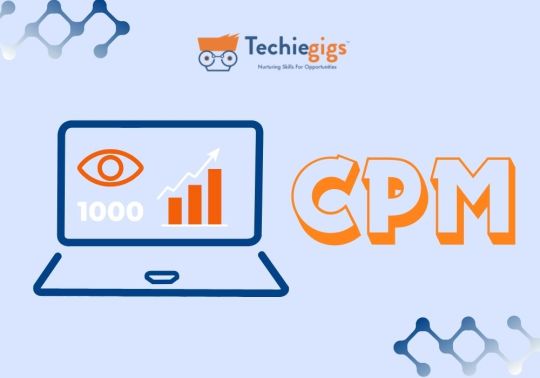
In this blog, we’ll walk through how to improve your CPM campaign performance through better targeting. By refining your targeting strategies, you can maximize your budget and ensure your ads are shown to users who are more likely to convert.
1. Understand Your Audience Deeply
The first step to improving your CPM campaign performance is to clearly define who your audience is. The more you know about your target audience, the better you can focus your ad delivery on the right people.
Demographics: Start with basic demographic data like age, gender, income, education level, and location. These insights help you build a clearer picture of who is most likely to be interested in your product or service.
Interests and Behaviors: Use audience insights to target based on interests, hobbies, and behaviors. For instance, if you’re selling athletic wear, you may want to target individuals interested in fitness, healthy living, or sports activities.
Intent Signals: Leverage data such as past website visits or online behaviors that show intent. For example, if someone has been researching certain products or services that align with your offerings, they may be more likely to engage with your ad.
By understanding your audience on a deeper level, you can ensure your CPM campaigns target the most relevant users, which increases the chances of engagement and conversion.
2. Use Detailed Demographic Targeting
When setting up your CPM campaigns on platforms like Google Ads, Facebook, or Instagram, you have the ability to target based on detailed demographics. This isn’t just about basic age or gender but extends to interests, behaviors, and location.
Age & Gender: Use age and gender data to create more tailored campaigns. For example, if your product is designed for young professionals, targeting a specific age range (e.g., 25–34) will likely yield better results.
Location: Geographic targeting is especially important for local businesses. Make sure you target users in the areas where your business operates, whether it’s specific cities, states, or regions. This can also help avoid spending money on impressions from users who are outside of your serviceable area.
Income Level: Platforms like Facebook allow you to target individuals based on household income. This can be valuable for products or services that are priced at a premium, allowing you to focus your budget on individuals more likely to purchase.
Fine-tuning demographic targeting ensures that you reach an audience that aligns with your product or service, which is critical to improving CPM campaign performance.
3. Leverage Behavioral and Interest-Based Targeting
Both Google Ads and social media platforms like Facebook and Instagram offer advanced behavioral and interest-based targeting options that can improve CPM performance. By targeting users based on their interests, browsing habits, and online behavior, you’re more likely to reach individuals who are actively engaging with similar content or have shown interest in related products.
Behavioral Targeting: This includes targeting users who have demonstrated behaviors that align with your offering. For example, if you’re running a campaign for a new smartphone, you could target users who have recently searched for tech-related content or visited tech websites.
Interest-Based Targeting: Platforms like Facebook provide detailed interest categories based on user activity, such as interests in fitness, cooking, or travel. This allows you to hone in on the specific types of users who are most likely to respond to your ads.
Targeting based on behavior and interests will help ensure that your ads are shown to people who are already more likely to engage, making your CPM dollars go further.
4. Use Lookalike Audiences
Lookalike audience targeting allows you to reach new users who share characteristics with your existing customers or website visitors. This type of audience is created based on data from your customer list, website visitors, or social media followers, which the platform uses to find users with similar behaviors and demographics.
How It Works: For instance, if you upload a list of your existing customers or website visitors to Facebook Ads, Facebook will find users who match their demographics, behaviors, and interests. These users are likely to be interested in your offering as well.
Lookalike audiences are particularly effective for scaling CPM campaigns because you’re targeting users who resemble your most valuable customers, thus improving the likelihood of conversion.
5. Retargeting and Remarketing
Retargeting or remarketing is one of the most effective strategies to improve CPM campaign performance. With retargeting, you can show your ads to users who have already interacted with your brand—whether that’s visiting your website, watching your videos, or adding products to their cart.
Website Visitors: Create retargeting ads for individuals who have visited specific pages on your website but didn’t complete a desired action (like making a purchase). You can serve ads that remind them of the product or offer they were interested in.
Cart Abandonment: For eCommerce businesses, retargeting ads aimed at people who abandoned their shopping carts can help drive conversions. A simple reminder or special offer can encourage them to return and complete their purchase.
Retargeting leverages previous interactions with your brand to bring back users who are already familiar with your product, resulting in better-qualified impressions and higher conversion rates.
6. Refine Your Ad Placements
Choosing the right placements for your CPM ads can significantly impact their performance. Platforms like Google Ads and Facebook allow you to select where your ads will appear, and selecting the right placements is critical for targeting the right audience.
YouTube Ads: If your audience is more likely to watch videos, YouTube can be a highly effective platform. You can target based on user interests or previous YouTube activity, ensuring your ad appears in front of people already interested in similar content.
Mobile vs. Desktop: Consider whether your audience is more likely to engage with your ad on mobile devices or desktop. Many users access content via mobile, so optimizing your ads for mobile devices can improve performance and conversions.
Native Ads: Native ads that appear within a website’s content can be highly effective because they blend seamlessly with the content, resulting in higher engagement rates.
By selecting the most relevant placements, you ensure that your CPM ads are shown in the right context to the right users.
7. Monitor and Adjust Campaigns Regularly
Once your CPM campaign is running, it’s crucial to monitor its performance continuously. Review metrics like CTR (Click-Through Rate), CPC (Cost Per Click), and conversion rates to gauge the effectiveness of your targeting.
Adjust Targeting: If certain audience segments aren’t converting as well as expected, refine your targeting. You can narrow or broaden your audience, depending on performance.
Optimize Frequency: Track how often users see your ad. Too many impressions to the same audience can lead to ad fatigue and decreased engagement. Adjust your ad frequency to avoid overexposing your audience.
Regular monitoring and tweaking will help you improve the performance of your CPM campaigns over time, ensuring that you’re getting the best results for your ad spend.
Conclusion
Improving the performance of your CPM campaigns relies heavily on better targeting. By refining your audience segmentation, leveraging advanced targeting options like behavioral data, lookalike audiences, and retargeting, you can ensure that your ads are shown to the most relevant users. The more specific and tailored your targeting, the more likely you are to turn impressions into valuable conversions.
By following the steps above, you can maximize your CPM ad spend and see a significant improvement in your campaign performance.
#CPM#DigitalAdvertising#Targeting#AdCampaign#MarketingStrategy#AdPerformance#Remarketing#LookalikeAudiences#AudienceTargeting#OnlineAdvertising#SocialMediaAds#AdOptimization#GoogleAds
1 note
·
View note
Text
Personalize Marketing with Segmentation Tools
Maximize your marketing and sales strategies with cutting-edge customer segmentation software. Easily categorize your audience into actionable segments, enabling targeted campaigns and personalized outreach for higher engagement and conversions. https://commence.com/software-features/customer-segmentation-software/
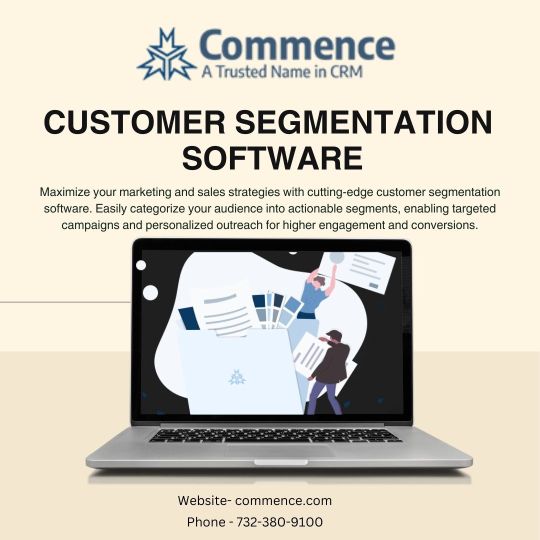
0 notes
Text
Google Ads vs. Facebook Ads: Which is Right for Your Digital Marketing Strategy?
In the ever-evolving world of digital marketing, businesses are constantly looking for the most effective online advertising platforms to reach their target audience. Two of the most powerful and widely used platforms are Google Ads and Facebook Ads. Both offer distinct advantages and cater to different marketing objectives, making it essential to understand their unique features when deciding which platform aligns best with your digital marketing strategy.
Understanding Google Ads
What Are Google Ads?
Google Ads, formerly known as Google AdWords, is a versatile pay-per-click advertising platform that enables businesses to display ads on Google’s search engine results pages (SERPs) and across its vast network of partner sites. With a variety of ad formats like text ads, display ads, shopping ads, and video ads, Google Ads provides flexible options to reach a broad audience.
How Does Google Ads Work?
Google Ads operates on a pay-per-click (PPC) model, where advertisers bid on keywords that are relevant to their target market. When users search for those keywords, Google displays relevant ads based on their search intent. The position of these ads is determined by a combination of bid amount and ad quality score, which factors in relevance, click-through rate (CTR), and expected performance.

Google Ads Advantages
Search Intent: Google Ads excels in capturing users with high purchase intent. When a user types a query like “buy running shoes online,” they’re actively searching for a product to purchase, making it an ideal platform for driving conversions.
Massive Reach: With billions of searches conducted daily, Google Ads offers unparalleled reach across its global audience, ideal for businesses looking to expand their visibility.
SEO for Paid Ads: By incorporating SEO keyword research and optimizing campaigns for on-page SEO and off-page SEO, businesses can boost the effectiveness of their paid ads and drive higher-quality traffic.
Cost-per-click Google Ads: Despite often being more competitive, Google Ads can deliver high Google Ads ROI due to its ability to target users already expressing intent to buy or inquire.
Understanding Facebook Ads
What Are Facebook Ads?
Facebook Ads is a social media marketing platform that extends across Facebook, Instagram, Messenger, and the Audience Network. The ads are designed to be visually compelling, utilizing formats like image ads, video ads, carousel ads, and story ads. This variety makes Facebook Ads ideal for businesses seeking to engage customers in a visually appealing and interactive way.

How Does Facebook Ads Work?
Unlike Google Ads, which primarily targets users based on search intent, Facebook Ads targeting is driven by audience data. Advertisers can create campaigns based on user demographics, interests, behaviors, and social connections. This allows businesses to reach potential customers who may not yet be actively searching for their products but are likely to engage based on their profile and interests.
Facebook Ads Engagement
Visual Engagement: Facebook Ads are highly visual, perfect for showcasing products or services that benefit from strong imagery. This format engages users, encouraging them to interact with the ad.
Advanced Audience Targeting: Facebook provides advanced demographic and behavioral targeting, allowing advertisers to reach highly specific audience segments based on interests, life events, and more.
Cost-Effectiveness for Brand Awareness: With typically lower cost-per-click (CPC) rates, Facebook Ads are a cost-effective solution for businesses focusing on content marketing strategies and building brand awareness.
Key Differences Between Google Ads and Facebook Ads

1. Audience Intent
Google Ads: Targets users based on search intent, making it ideal for businesses looking to capture leads that are actively searching for specific products or services.
Facebook Ads: Focuses on building awareness and generating demand based on user interests, demographics, and behaviors, making it suitable for businesses looking to create a buzz around their offerings.
2. Ad Formats
Google Ads: Offers text-based search ads, display ads, shopping ads, and video ads, giving businesses a variety of formats to suit their goals.
Facebook Ads: Focuses on visually rich content, offering image ads, video ads, carousel ads, and story ads that encourage social interactions and engagement.
3. Cost Structure
Both platforms operate on auction-based systems, but CPC Google Ads can be higher, especially in competitive industries. Facebook Ads engagement tends to provide a more budget-friendly option for businesses prioritizing social media marketing and brand awareness.
4. Targeting Options
Google Ads: Leverages SEO for paid ads with targeting based on keywords, location, device, and time.
Facebook Ads: Uses sophisticated targeting based on demographics, interests, behaviors, and social connections.
5. Learning Curve
Google Ads: Due to its reliance on keyword research and bid strategies, Google Ads can be more complex, particularly for beginners who are new to search engine optimization.
Facebook Ads: Typically, easier to get started with, though creating visually compelling ads requires creativity and an understanding of the target audience.
Choosing the Right Platform for Your Business

When to Choose Google Ads
Google Ads is a top choice for businesses looking to target high-intent users and drive immediate conversions. Opt for Google Ads if:
You offer products or services that customers actively search for.
You operate in a competitive market where SEO keyword research and targeting high-value keywords are critical.
You want measurable Google Ads ROI and performance-driven results.
You’re focused on local SEO optimization or targeting users across various devices and regions.
When to Choose Facebook Ads
Facebook Ads excels in building brand awareness, creating engaging content, and targeting specific user segments. Choose Facebook Ads if:
You want to build demand for a product or service through engaging visuals and content marketing.
Your product has strong visual appeal, and you want to foster interaction through social media marketing.
You aim to create a community or increase social engagement through likes, shares, and comments.
You’re targeting a niche audience based on specific behaviors and interests.
Combining Google Ads and Facebook Ads
For a comprehensive digital marketing strategy, businesses can benefit from using both Google Ads and Facebook Ads together. Here’s how:
Google Ads: Use this platform to capture leads with high search intent, driving conversions from users actively searching for your product or service.
Facebook Ads: Leverage Facebook Ads to nurture these leads, engage with your audience, and enhance brand awareness over time.
By combining the strengths of both platforms, businesses can create a well-rounded marketing approach that boosts engagement, conversions, and overall ROI.
Conclusion
Both Google Ads advantages and Facebook Ads targeting offer powerful benefits, but the right platform depends on your business goals. If capturing high-intent traffic and driving immediate sales is a priority, Google Ads is the best fit. If building brand awareness and engaging with a specific audience through visuals and social interaction is your goal, Facebook Ads should be your choice.
Understanding your audience and leveraging digital marketing trends and techniques like on-page SEO, off-page SEO, and SEO for paid ads will help you maximize the potential of both platforms. Whether you choose Google Ads, Facebook Ads, or both, investing in online advertising platforms is a crucial step toward growing your business in the digital age.
#DigitalMarketing#OnlineAdvertising#MarketingStrategy#AdsStrategy#GoogleAds#GoogleAdWords#PayPerClick#FacebookAds#SocialMediaAds#SMM#PaidSocial#MarketingComparison#MarketingInsights#BusinessGrowth#AdCampaign#DigitalTrends#GrowthHacking#AudienceTargeting
1 note
·
View note
Text

Boost your digital marketing services with these tips! 🎯 Target the right audience for better reach. 🤝 Partner with influencers who align with your brand. 🎥 Create interactive content like polls and videos to engage your audience. Implement these for real results!
#DigitalMarketing#MarketingTips#SocialMediaMarketing#ContentCreation#InfluencerMarketing#AudienceTargeting#InteractiveContent#OnlineMarketing#MarketingStrategy#GrowYourBusiness
1 note
·
View note
Text
Viral Monetization Masterclass:
Your Escape Ticket!📊 By The Numbers:- 0 to $10K/Month Blueprint- 30-Day Implementation Plan- 95% Student Success Rate- Lifetime Strategy Updates.
grab your content

#aicontentmarketing#creativemarketing#marketinginnovation#viralcontentstrategy#socialmediacontent#contentoptimization#audienceconnection#audiencetargeting#customerinsights
0 notes
Text
#DigitalMarketingCampaign#SEO#PPCAds#EmailMarketing#IntegratedMarketing#CampaignPlanning#OnlineAdvertising#MarketingStrategy#AudienceTargeting#DigitalSuccess#ROI#ContentMarketing#MarketingOptimization#MultiChannelMarketing
0 notes
Text
Mastering Engagement: Crafting Social Media Campaigns that Resonate
**Blog Post: "Creating Engaging Social Media Campaigns"**
**Title Suggestion:** Mastering Engagement: Crafting Social Media Campaigns that Resonate
**Image Suggestion:** Visual showcasing engaging social media posts and interactions.
**Introduction:**
Social media has become a powerhouse for businesses to connect with their audience. Learn how to create social media campaigns that captivate and leave a lasting impression.
**Elements of an Engaging Social Media Campaign:**
1. **Clear Objectives:**
- Define specific goals for your campaign, whether it's brand awareness, lead generation, or something else.
2. **Compelling Content:**
- Discuss the importance of using eye-catching visuals, concise copy, and storytelling techniques.
3. **Audience Targeting:**
- Emphasize the significance of knowing your audience and tailoring content to their preferences and interests.
4. **Interactive Elements:**
- Encourage user participation through polls, contests, quizzes, or other interactive features.
5. **Consistent Branding:**
- Highlight the need to maintain a cohesive brand identity across all social media platforms.
**Conclusion:**
Crafting engaging social media campaigns is an art that requires careful planning, creativity, and a deep understanding of your audience. By following these principles, you can create campaigns that leave a lasting impact.
0 notes
Text

Common Mistakes to Avoid When Creating Buyer Personas
Creating buyer personas can be challenging, and there are common pitfalls to avoid:
Using Assumptions Instead of Data: Rely on real data from research and analytics instead of assumptions about your target audience.
Being Too Broad or Too Specific: Strike a balance between broad and highly specific personas. Too broad can lead to ineffective targeting, while too specific may exclude valuable audience segments.
Neglecting Regular Updates: Customer behavior and preferences change over time, so review and update your personas regularly to keep them relevant.
Ignoring Negative Personas: Not creating negative personas can lead to wasted resources by attracting unqualified audiences; defining these helps focus efforts on the most profitable customers.
Relying Solely on Internal Perspectives: Building personas based only on internal opinions risks bias; incorporating real customer feedback ensures more accurate and useful profiles.
Not Aligning Personas with the Buyer’s Journey: Buyer personas should match the customer journey stages to ensure messaging resonates from awareness to decision-making.
Overlooking Niche Segments: Focusing only on broad categories can miss high-value niche segments; targeting these specific groups enhances relevance and competitive advantage.
#buyerpersona#targetmarket#targetpersona#audiencetargeting#metsertive#digitalmarketing#Targetaudience
0 notes
Text

Content Marketing and SEO Best Practices Across Startups, Medical, Technology, and eCommerce Sectors https://kamyarshah.com/content-marketing-and-seo-best-practices-across-startups-medical-technology-and-ecommerce-sectors/
0 notes
Text

A meme comparing traditional marketing vs. digital marketing. On the traditional side, a person is shouting into a megaphone, representing a broad, untargeted audience. On the digital side, a person is holding a phone with an ad targeting a specific audience, showing the precision of digital marketing. 'Traditional Marketing: Aiming at everyone. Digital Marketing: Aiming at the right people.'"
#Marketing#DigitalMarketing#TraditionalMarketing#TargetAudience#Advertising#Branding#ContentMarketing#OnlineMarketing#SocialMediaMarketing#AudienceTargeting#AdCampaigns#MarketingStrategy#MarketingDesign#CreativeMarketing#DigitalAds#MarketingTips#GrowthHacking#BusinessMarketing#MarketingMemes#DigitalStrategy
1 note
·
View note
Text

📢 Keep Your Visitors Informed with Informational Messages from NotifyStudio.com!
Delivering key information at the right time can make a huge difference in how users interact with your site. With NotifyStudio’s Informational Messages feature, you can share essential updates, promotions, and alerts directly with your visitors—making sure they stay informed, engaged, and connected.
Here’s how Informational Messages help elevate your website experience:
Build trust with real-time updates on new products, services, and special offers.
Guide user actions by offering tips, reminders, and helpful prompts.
Improve user experience with targeted messaging for specific pages or actions.
Create urgency with limited-time announcements that drive conversions.
📈 Informative, interactive, and impactful—our messages are the ideal way to keep your audience in the loop and drive meaningful engagement.
🌟 Take a step toward better engagement with NotifyStudio’s Informational Messages today! 🌟
#CustomerEngagement#WebsiteUpdates#InformationalMessages#UserExperience#DigitalMarketing#VisitorEngagement#WebsiteWidgets#RealTimeUpdates#MarketingAutomation#ConversionOptimization#NotifyStudio#WebsiteTraffic#MarketingTools#AudienceTargeting#EngagementStrategy
0 notes
Text
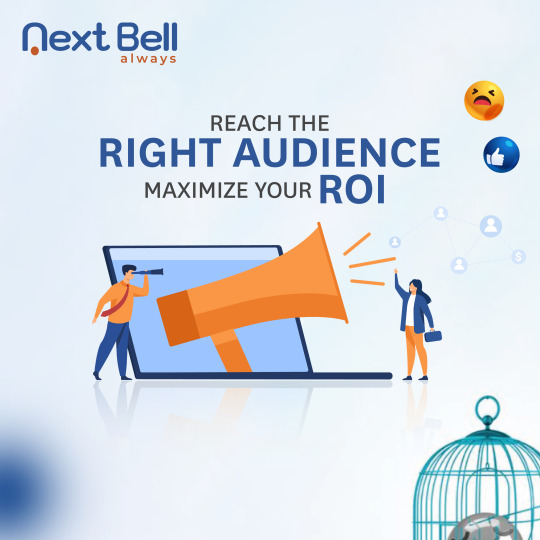
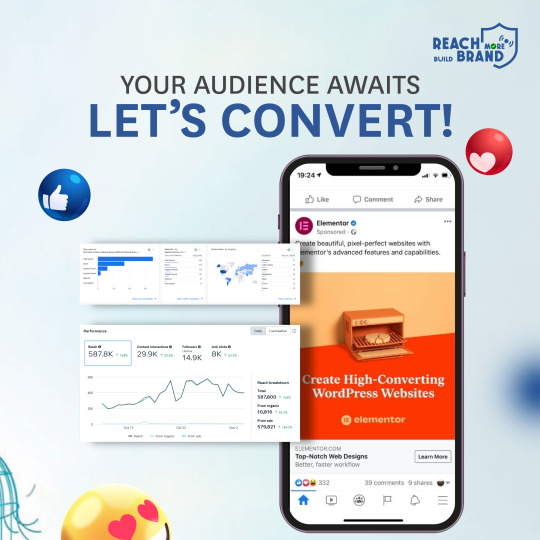
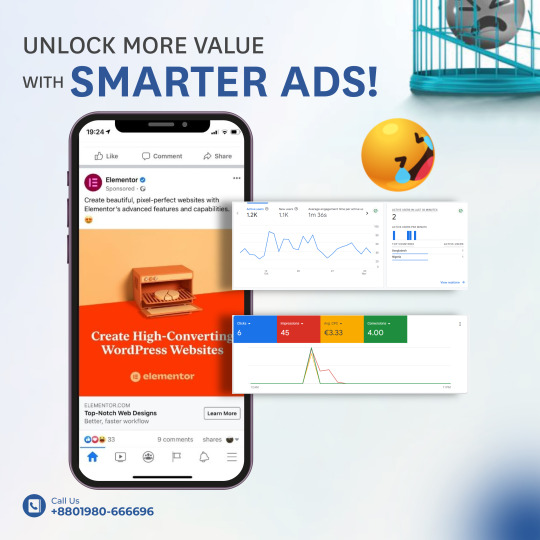
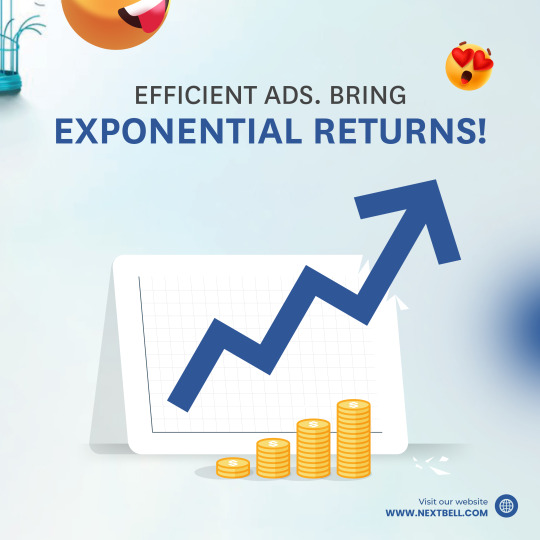
Reach the Right Audience. Maximize Your ROI
Your ad budget deserves to work smarter, not harder! Did you know that precise audience targeting can increase your ROI by up to 200%? Our expert media buying strategies ensure your message reaches those who matter most, driving conversions and maximizing every dollar spent. Let’s transform your investment into exponential growth.
Ready to see real results? Let's target your success! Phone: +880 1980-666696 Mail: [email protected]
#MediaBuying#DigitalMarketing#ROI#AudienceTargeting#Conversions#MarketingTips#SmartAds#GrowthHacking#AdStrategy#BusinessSuccess
0 notes
Text

Woosper Social Media Marketing Consultant offers expert guidance in building and optimizing your brand's presence across social platforms. With deep industry knowledge and data-driven strategies, our consultants help you enhance engagement, grow your audience, and drive conversions. From crafting compelling content to managing paid campaigns, we tailor each aspect to your business goals, ensuring consistent brand messaging and a measurable impact on your bottom line.
#SocialMediaMarketing#DigitalMarketing#SocialMediaStrategy#BrandEngagement#ContentMarketing#SocialMediaGrowth#OnlineBranding#SocialMediaConsulting#InfluencerMarketing#AudienceTargeting
0 notes